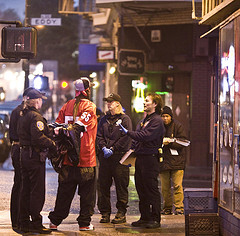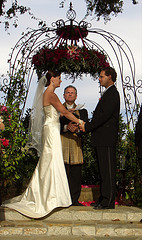Science Daily reports on a new study from Christine Whelan at the University of Iowa which suggests that men whose mothers earned a college degree and worked outside the home seem to have an effect on how they choose their wives.
Whelan’s study, which focuses on high-achieving men (defined as those who are in the top 10% of earnings for their age as well as those with a graduate degrees), are likely to marry a woman whose education mimics their mothers’. Of these high achieving men in the study, almost 80% of them whose mothers had college degrees married women with college degrees.
In addition, of those men whose mothers had graduate degrees, 62% of high-achieving men married other graduate degree holders, and 27% got hitched to women with college degrees.
“‘Successful men in their 20s and 30s today are the sons of a pioneering generation of high-achieving career women. Their mothers serve as role models for how a woman can be nurturing and successful at the same time,’ said Whelan, a visiting assistant professor of sociology in the UI College of Liberal Arts and Sciences. ‘One man I interviewed put it like this: “If your mother is a success, you don’t have any ideas of success and family that exclude a woman from working.” This Mother’s Day, I think we should thank those moms for leading the way toward gender equality for a younger generation.'”

 The New York Sun
The New York Sun The National Post
The National Post Mike Nizza, author of the New York Times blog
Mike Nizza, author of the New York Times blog  Talking about marriage? Call in the sociologists!
Talking about marriage? Call in the sociologists!